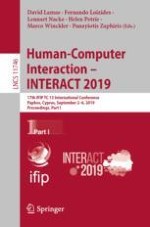2019 | OriginalPaper | Chapter
Comparing “Challenge-Based” and “Code-Based” Internet Voting Verification Implementations
Authors : Oksana Kulyk, Jan Henzel, Karen Renaud, Melanie Volkamer
Published in: Human-Computer Interaction – INTERACT 2019
Publisher: Springer International Publishing
Activate our intelligent search to find suitable subject content or patents.
Select sections of text to find matching patents with Artificial Intelligence. powered by
Select sections of text to find additional relevant content using AI-assisted search. powered by
